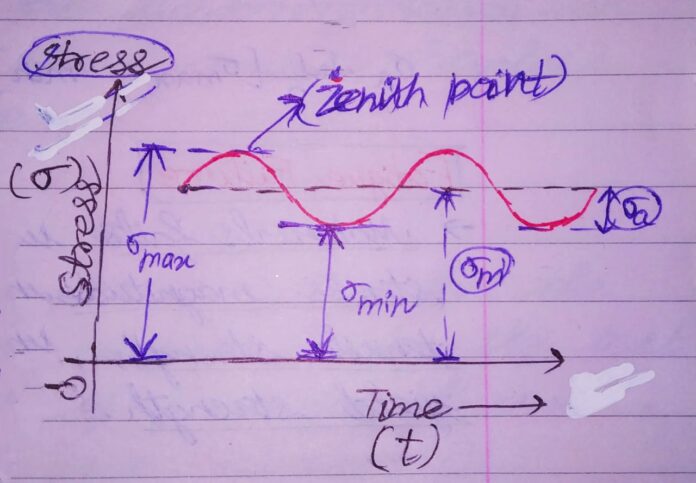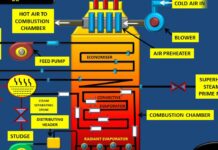STUDY OF FLUCTUATING STRESSES :WHY IT IS IMPORTANT IN DESIGN???
Fluctuating stresses??? WHAT, HOW AND WHY????
Till now, IN THE PREVIOUS BLOGS, we learned about static loading and its related stresses.
IN CASE IF YOU MISSED IT , PLZ REFER TO THE LINK BELOW:
https://mechomotive.com/wp-admin/post.php?post=3355&action=edit
Static loading is that loading which does not change w.r.t magnitude and direction.
But we see that many practical applications seemed to work on specific loading conditions. These acting forces changed in magnitude OR direction OR both.
These forces , so called fluctuating forces depend on magnitude OR direction OR both magnitude and direction.
FLUCTUATING STRESS: The stresses produced from fluctuating forces and loading system.
NEED OF FLUCTUATING STRESS STUDY:
Nowadays, many of the industries work on fluctuating stress and loads.
It came into study by the following observation:
“About 80% of the components failed due to fatigue failure occurring due to fluctuating stresses.”
So, study of fluctuating stresses came needed to make design safer.
Since, cyclic stress variations were irregular and non-analytic, various models came in suggestion for the study.
AT LAST, Sine curve came to be taken as the easiest and popular model.
This model was based on Stress -Time relationship.
CYCLIC STRESS MODELS – BASED ON “SINE CURVE MODEL”
Before going for cyclic stress study , Let’s have a glance on some important terms
1. MAXIMUM STRESS: Maximum stress of the system. Denoted by σmax .
2. MINIMUM STRESS: Minimum stress of the system. Denoted by σmin.
3. MEAN STRESS: Sum average of the MAX. and MIN. stress of the system. Denoted by σm.
σm= σmax + σmin/2
4. VARIABLE STRESS/STRESS AMPLITUDE: Average of the difference of the MAX. and MIN. stress of the system. Denoted by σv.
σv= σmax – σmin/2
There are main 3 important mathematical models for Cyclic Stresses :
1. FLUCTUATING STRESSES/ ALTERNATING STRESSES :
These stresses show changes in a sinusoidal manner w.r.t time. It has some maximum value as well as minimum value stress.
So, there is a fixed mean stress value as well as variable stress value. These stresses can be – Tensile, Compressive or Partial tensile and partial compressive.
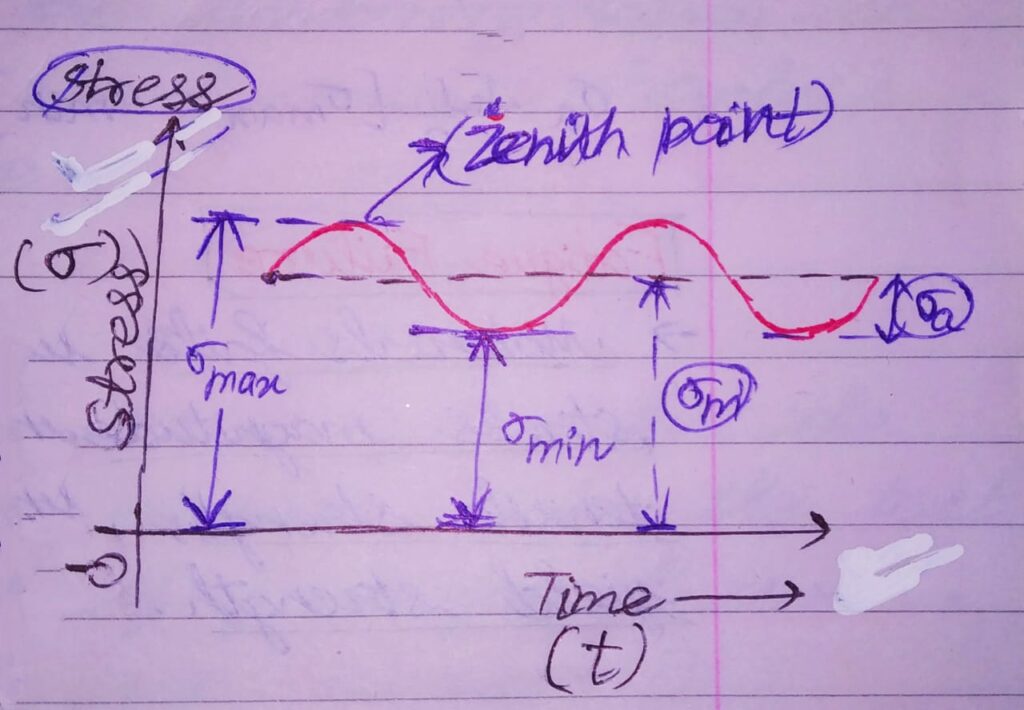
Here, σmax & σmin ≠0
Therefore , σm & σv ≠0
σm= σmax + σmin/2 σv= σmax – σmin/2
2. REPEATED STRESSES:
These stresses show changes in a sinusoidal manner w.r.t time. But, here the variation starts from the origin (i.e 0,0).
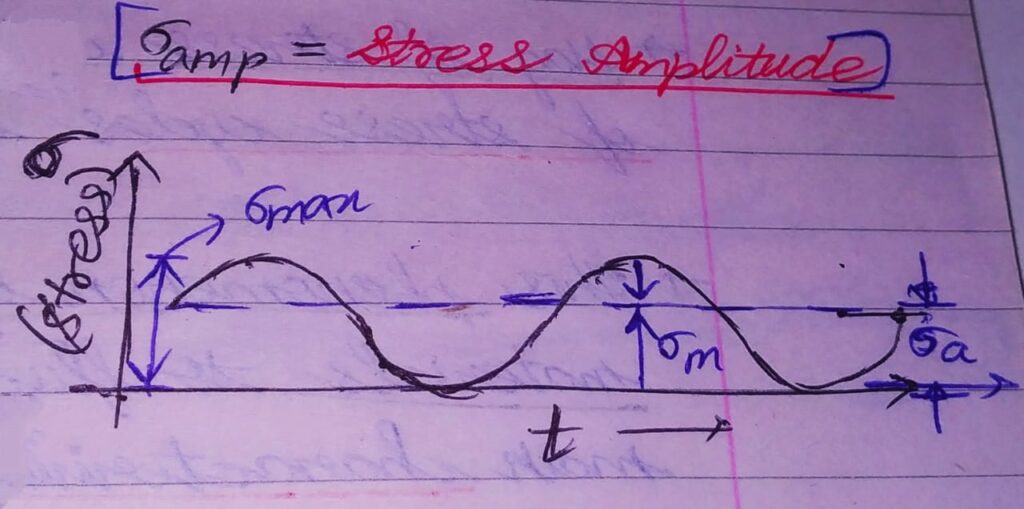
Therefore, σmin=0 & σmax= Definite value
σm= σmax + σmin/2 = σmax/2
σv= σmax – σmin/2 = σmax/2
3. REVERSED STRESSES :
These stresses show changes in a sinusoidal manner w.r.t time. But , here the maximum value and minimum value stresses are equal in magnitude ,but opposite in direction.
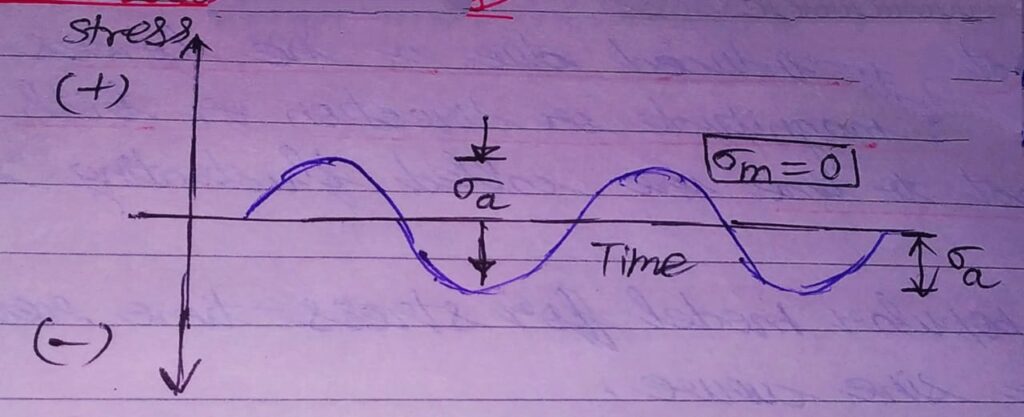
Therefore, σmin=-σ & σmax=+σ
σm= σmax + σmin/2 = 0
σv= σmax – σmin/2 = σ
In fluctuating stress analysis , tensile stress is taken as positive, while compressive stress is taken as negative.


